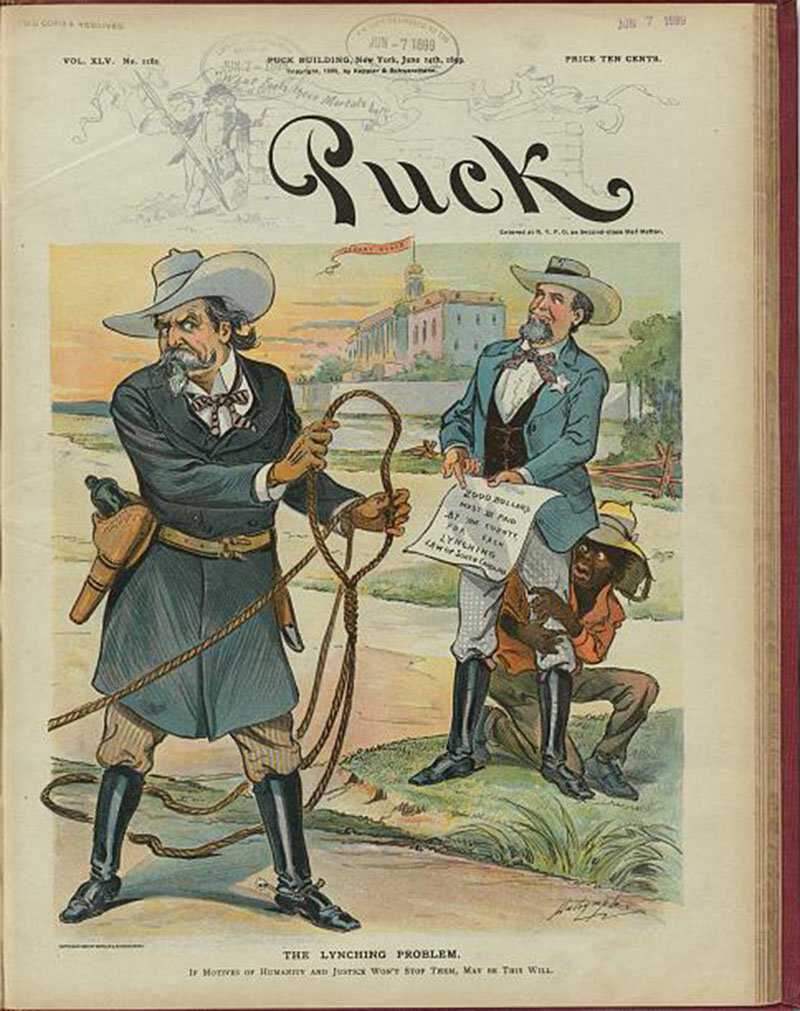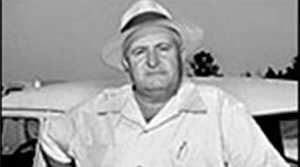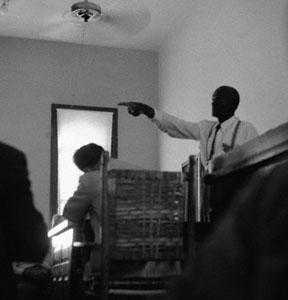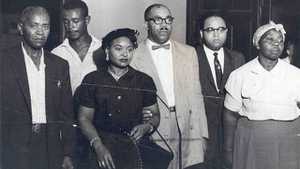Lynching in America

For many African Americans growing up in the South in the 19th and 20th centuries, the threat of lynching was commonplace. The popular image of an angry white mob stringing a black man up to a tree is only half the story. Lynching, an act of terror meant to spread fear among blacks, served the broad social purpose of maintaining white supremacy in the economic, social and political spheres.
Author Richard Wright, who was born near Natchez in southwest Mississippi, knew of two men who were lynched—his step-uncle and the brother of a neighborhood friend. In his book Black Boy, he wrote: "The things that influenced my conduct as a Negro did not have to happen to me directly; I needed but to hear of them to feel their full effects in the deepest layers of my consciousness. Indeed, the white brutality that I had not seen was a more effective control of my behavior than that which I knew."
Although the practice of lynching had existed since before slavery, it gained momentum duringReconstruction, when viable black towns sprang up across the South and African Americans began to make political and economic inroads by registering to vote, establishing businesses and running for public office. Many whites—landowners and poor whites—felt threatened by this rise in black prominence. Foremost on their minds was a fear of sex between the races. Some whites espoused the idea that black men were sexual predators and wanted integration in order to be with white women.
Lynchings were frequently committed with the most flagrant public display. Like executions by guillotine in medieval times, lynchings were often advertised in newspapers and drew large crowds of white families. They were a kind of vigilantism where Southern white men saw themselves as protectors of their way of life and their white women. By the early 20th century, the writer Mark Twain had a name for it: the United States of Lyncherdom.
Lynchings were covered in local newspapers with headlines spelling out the horrific details. Photos of victims, with exultant white observers posed next to them, were taken for distribution in newspapers or on postcards. Body parts, including genitalia, were sometimes distributed to spectators or put on public display. Most infractions were for petty crimes, like theft, but the biggest one of all was looking at or associating with white women. Many victims were black businessmen or black men who refused to back down from a fight. Headlines such as the following were not uncommon:
"Five White Men Take Negro Into Woods; Kill Him: Had Been Charged with Associating with White Women" went over The Associated Press wires about a lynching in Shreveport, Louisiana.
"Negro Is Slain By Texas Posse: Victim's Heart Removed After His Capture By Armed Men" was published in The New York World Telegram on December 8, 1933.
"Negro and White Scuffle; Negro Is Jailed, Lynched" was published in the Atlanta Constitution on July 6, 1933.
Newspapers even printed that prominent white citizens in local towns attended lynchings, and often published victory pictures -- smiling crowds, many with children in tow -- standing next to the corpse.
In the South, an estimated two or three blacks were lynched each week in the late 19th and early 20th centuries. In Mississippi alone, 500 blacks were lynched from the 1800s to 1955. Nationwide, the figure climbed to nearly 5,000.
Although rape is often cited as a rationale, statistics now show that only about one-fourth of lynchings from 1880 to 1930 were prompted by an accusation of rape. In fact, most victims of lynching were political activists, labor organizers or black men and women who violated white expectations of black deference, and were deemed "uppity" or "insolent." Though most victims were black men, women were by no means exempt.
According to black journalist and editor Ida B. Wells, who launched a fierce anti-lynching campaign in the 1890s, the lynching of successful black people was a means of subordinating potential black economic competitors. She also argued that consensual sex between black men and white women, while forbidden, was widespread. Thus lynching was also a means of imposing order on white women's sexuality. Wells, who would later help found the National Association for the Advancement of Colored People, was forced to flee Memphis after her offices were torched.
With lynching as a violent backdrop in the South, Jim Crow as the law of the land, and the poverty of the sharecropper system, blacks had no recourse. This triage of repression ensured blacks would remain impoverished, endangered, and without rights or hope. Whites could accuse at will and rarely was a white punished for a crime committed against a black. Even for those whites who were opposed to lynching, there was not much they could do. If there was an investigation, white citizens closed ranks to protect their own and rarely were mob leaders identified.
Violence against blacks would taper off during the second World War and rise again after the passage of the Supreme Court's Brown v. Board of Education decision that nullified the country's separate-but-equal doctrine. Armed with hope, blacks began to register and organize people to vote. Local NAACP chapters began sprouting up in small towns.
When Emmett Till was murdered, the head of the NAACP, Roy Wilkins, lambasted Mississippi and called Emmett's murder a lynching. "It would appear from this lynching that the State of Mississippi has decided to maintain white supremacy by murdering children."
The brutal slaying of a 14-year-old boy was shocking, and when the killers later confessed to the crime in an article published in Look magazine, African Americans and others who supported civil liberties realized they would have to organize en masse and risk their lives in order to bring change.







